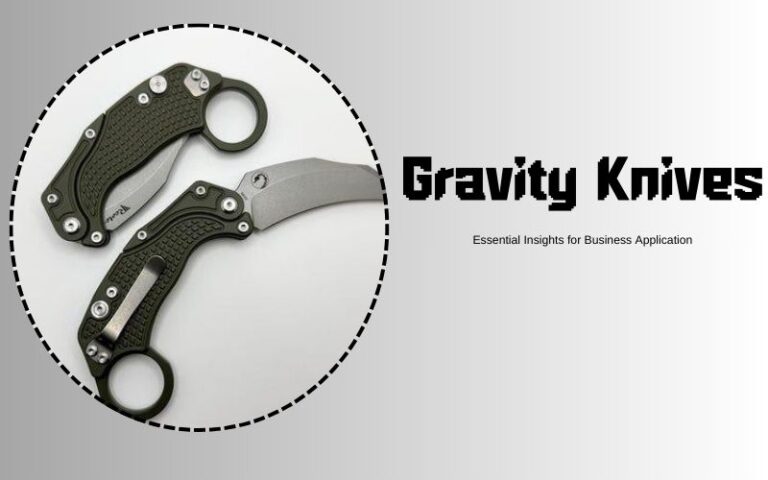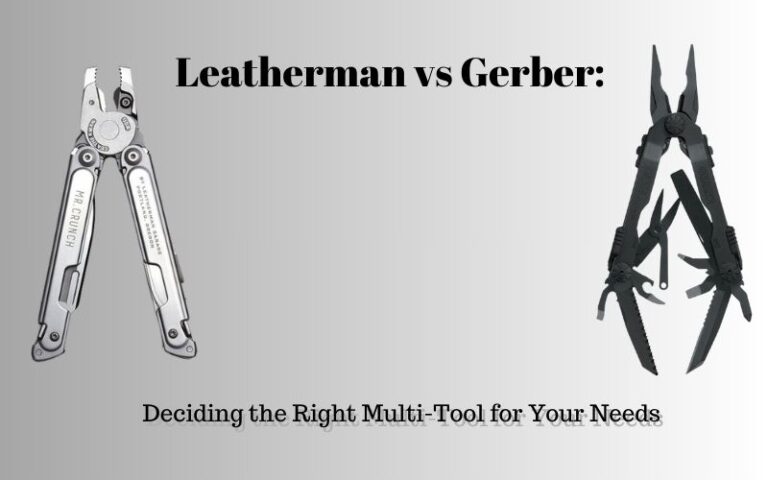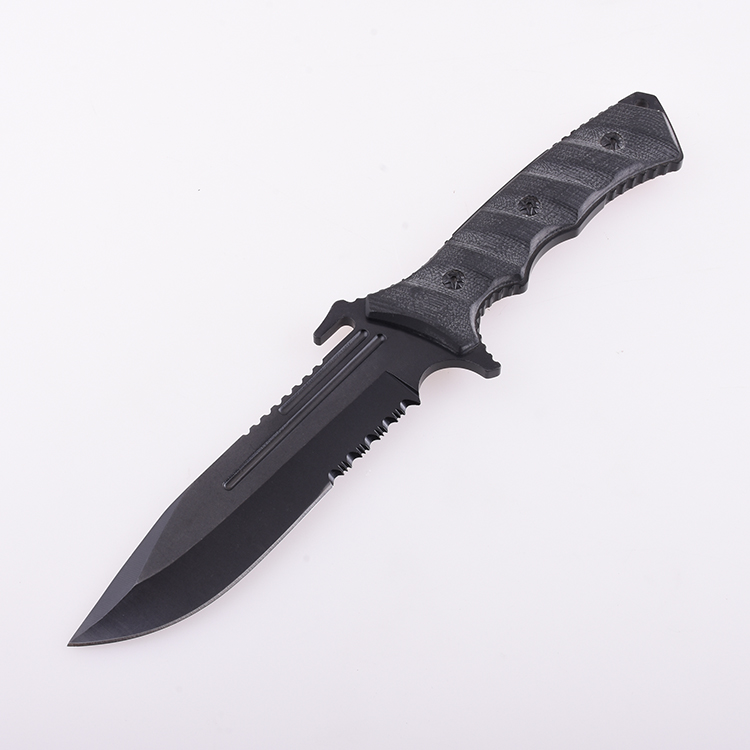
We have at some point in life used a knife on different occasions, maybe during camping, hunting, or in the kitchen. Knives are important tools in our daily lives since they play a big role. When wholesaling knives for your company or personal use, you should work with the best manufacturer available. Knife manufacturing isn’t a straightforward business; it requires a dedicated wholesale knives manufacturer.
To get the right blade for any given purpose, you will need a lot of engineering experience with a variety of materials, industries, and applications. Do you want to select an OEM knives manufacturer in 2022 that will deliver a faultless and precise knife for your application? Shieldon has the knowledge and experience to meet all of your industrial knife production needs and to help you along the way.
The Production Process Of Fixed Blade Knives
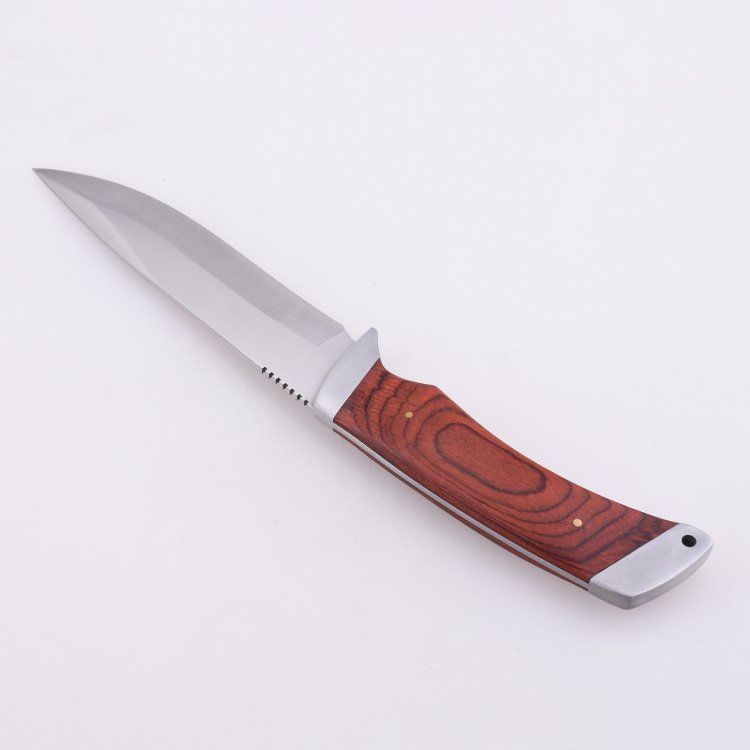
It is very simple to produce a fixed blade knife but it requires a lot of commitment to the whole process. Check out the below procedures to guide you on the whole production process of custom fixed blades for knives.
● Formation Of The Blade
The blade starts out as a “blank,” cut from flat material that hasn’t been heat-treated and is in a “soft” state. Knives that are mass-produced are stamped in a punch press with a hardened punch and die designed to fit the blade’s outline.
The punch is driven into the die through the material, blanking the rough blade into form. A saw can be used to carve out customized pocket knives, or an industrial laser can be used to cut out particularly elaborate blades.
● Hardening Of The Blade
To keep the knife-edge sharp, the blade has been toughened. Different hardening and heat-treating processes may be required for different blade materials. Several blades are placed in a ceramic tray in a heat-treating oven to harden them. They are set flat to avoid warping due to the weight of the blades.
The temperature in the oven is raised to around 1600°F (871°C) depending on the alloy’s unique specifications. The entire tray is taken from the oven after the blades have been heated for around two hours, and the blades are soaked in oil or water.
● Sharpening And Polishing
The heat-treated blades are polished and sharpened when they have cooled. Polishing can be done using a machine or by hand. The sides of the blade are sanded with a flat belt sander to achieve a smooth and even, brushed appearance.
This also eliminates the surface residue from the heat-treat process and polishes off any markings from the punch press operation. The blade is then placed in a grinding fixture, where it is passed through a series of grinding wheels.
● Honing
To the untrained eye, the knife-edge seems to be nothing more than two intersecting surfaces. Closer inspection reveals that the true form of the edge is made up of two unique sets of angles. The first is the rough angle that generates the cutting edge. The second is the tiny angle that really forms the cutting edge. Honing is a delicate grinding process that produces this edge. Depending on the blade application, the honing may be angled between 17 and 30 degrees to the blade axis.
● Assemble Stock, Guard, and Pommel.
The knife blade’s tang is riveted or pushed into the stocks. Smoothing the stocks and blending the rivet heads is done with a buffing wheel. The washer segments are layered onto the tang starting at the guard in the case of a leather handle. The pommel is placed onto the end of the tang and fixed with a pin or rivet after the handle length has been filled with leather.
This compacts the leather, resulting in a firm, easy-to-grasp handle. A grinding wheel can be used to shape the leather, which can then be treated with a penetrating sealer. The guard and pommel can then be polished using the buffing wheel to complete the look.
Blade Selection And Process
When buying a knife, one of your first considerations should be the blade for the work at hand, but you should also be aware that there are tradeoffs to be made. Piercing ability, tip strength, slicing efficiency, and the amount of abuse a blade can take are all considerations in determining which blade is the greatest, but what makes a knife exceptional at one thing may hinder it in another.
● Operation
A knife blade’s principal function is to cut, trim, slit, slice, score, or crease the target medium. To fulfill these jobs, blades rely on the pressure exerted on their edges. Blade replacement or sharpening should be done on a regular basis to keep the cutting edge performing at its best.
● Configurations
Depending on the use, knife blades are frequently composed of high speed/tool steel, carbon steel, alloy steel, stainless steel, or even ceramic. OEM knives blade are usually attached to a handle or grip that fits comfortably in the hand. Scalloped or toothed cutting edges are also possible to be used as blades.
● Specifications
Knives can go through a variety of production procedures, including vacuum hardening, triple tempering, lapping, and polishing techniques to produce the finest metal slitter knives for material shearing. Knife blades can be developed and manufactured to meet practically any cutting application or industrial criteria.
There are different types of blades to pick from depending on your application. Below are a few types of knives blades that are commonly used. Read on.
Drop Point Blade
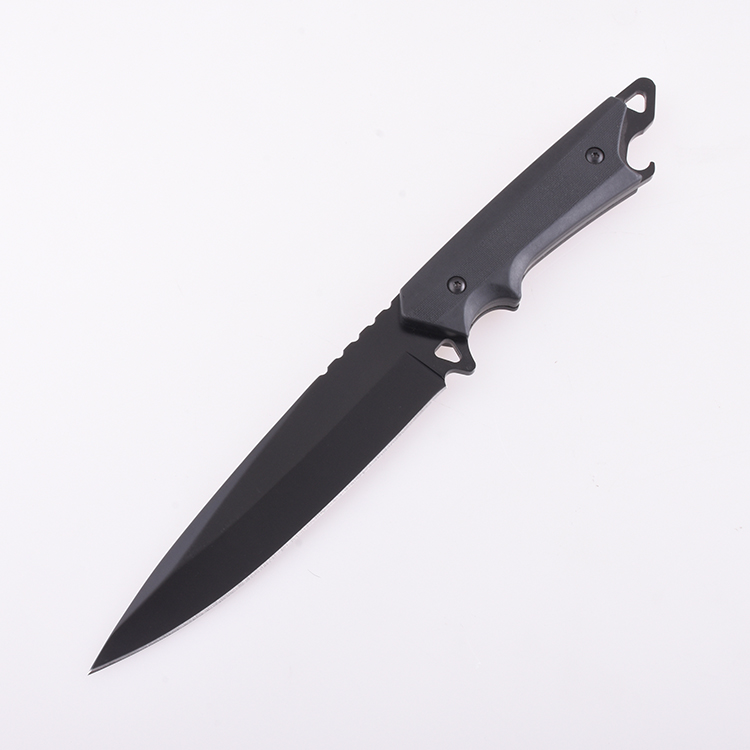
Drop-point blades have a little downward curve to the spine, forming a lowered, or “dropped,” tip. This type of blade is among the favorite custom fixed blade hunting knives for most hunters. This allows the blade to be rotated edge up while field dressing an animal, elevating the drop point and preventing the blade from nicking or cutting into the animal’s internal organs. It also has a large enough belly to be skinned.
Straight Back Blade
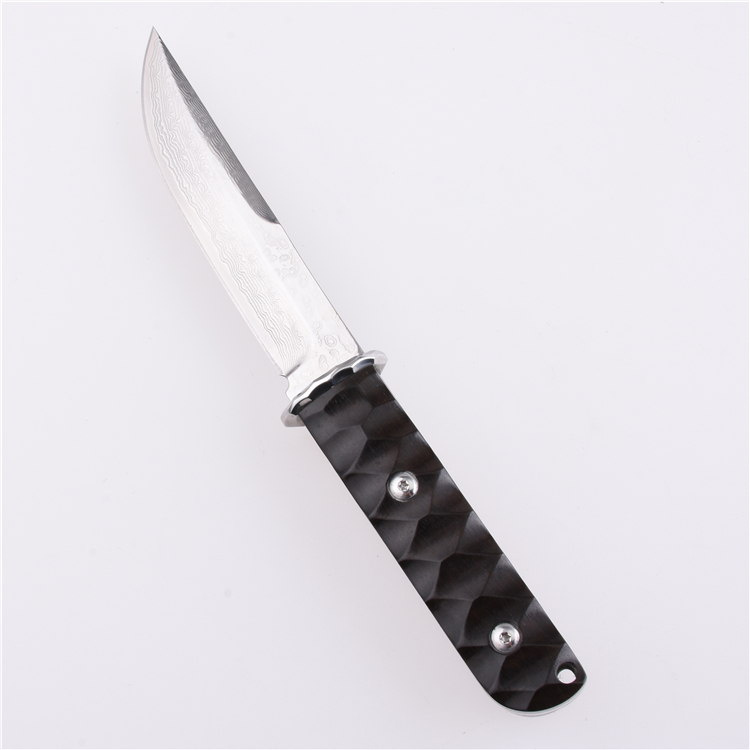
This is a straight back blade profile, with a straight spine and an upward curving edge that rises to meet the spine and forms a semi-sharp tip. A straight back knife is good for chopping and slicing because it lacks complicated angles and curves, and the unsharpened spine lets you concentrate force with your fingers or palms. It’s a good profile to learn how to sharpen a knife with.
Tanto Blade
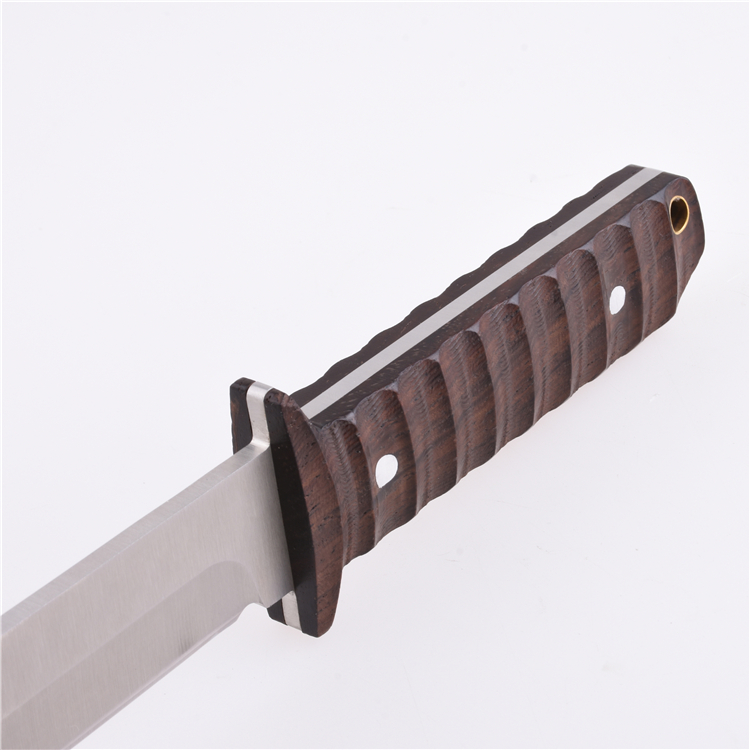
A tanto blade is another type of knife blade that features the following: thick, with a straight edge that abruptly curves upward at the blade tip, meeting the spine at a straight or slightly convex angle. A second sharpened edge reaches the tip as a result of this. At Shieldon, you can get the best tanto blades to serve you perfectly.
Selection Of Material And Process Of Knife Handle
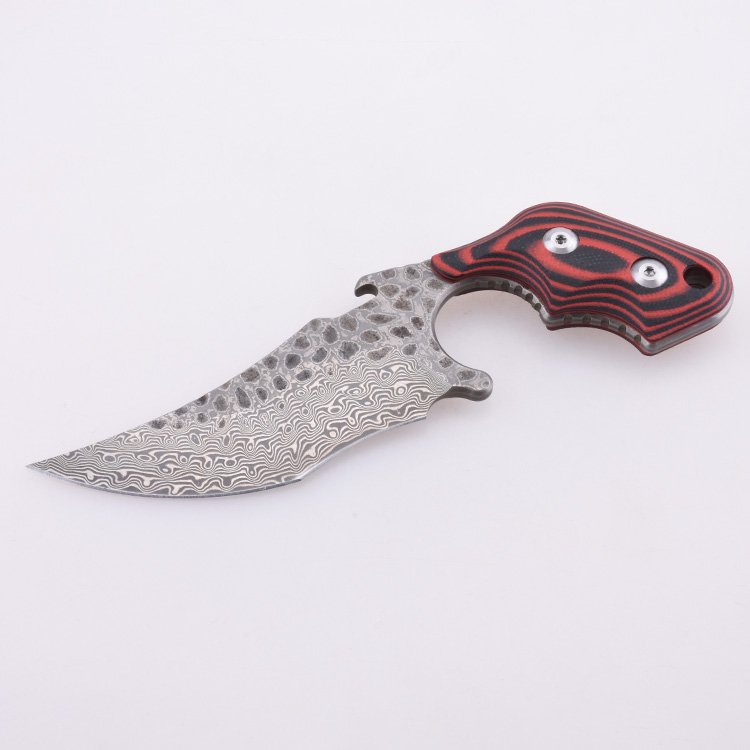
The majority of casual knife aficionados go for customized pocket knives by looking at their blades. People seem to forget that every knife has a second side that is equally more important than the sharp end. The part of the knife that you hold in your hand when using the handle is a very important part of the knife.
The handle can be made of different materials depending on the application of the knife. Let us go through the materials used when making the knife handles to help you select the best for your daily applications.
Aluminum
There are several advantages to using aluminum as a knife handle material. For starters, it can be anodized in almost any color you can think of, which adds a stylish touch to any knife while also increasing its toughness. A good number of pocket knife manufacturers go for aluminum handles because it is low-density metal, which means it’s not just strong but also light.
Stainless Steel
While stainless steel is not as light as aluminum, it is far more resistant to dents and scratches. It’s also resistant to corrosion, albeit not fully impervious to it, so you will have to take extra precautions to keep it rust-free. Stainless steel is the most widely accessible and least priced metal handle, but it is also one of the heaviest.
Titanium
Titanium is the lightest metal used in knife handles, despite its incredible durability and toughness. However, it is also the most expensive. It has excellent corrosion resistance, does not conduct or retain cold as well as its competitors, and maybe anodized in the same way as aluminum. Surprisingly, titanium is less scratch-resistant than stainless steel, but the benefits of lightness exceed this disadvantage.
Carbon Fiber
The phrase “carbon fiber” refers to any material created by weaving together carbon strands and then setting them in a resin. Carbon fiber is typically exceedingly light, entirely immune to rust and corrosion because of its nonmetallic nature, and stronger than stainless or carbon steel.
It’s also prone to being brittle, not particularly impact-resistant, and on the pricey side of the range. Still, in terms of qualities and appearance, this is one of the most distinctive materials utilized in knife production. OEM Bowie Knife Carbon Fiber Linen Handle HX-002 is a good example of a knife made of carbon fiber material.
Selection Of Sheaths.
If you are a knife fanatic, a military man, or just a regular adventurer, you will need a knife that can withstand all types of torture and abuse. It assists you in surviving in the wilderness and sticks with you through thick and thin. The most important aspect of upkeep is to keep it covered and protected. A sheath accomplishes this. Knife sheaths are made of different materials depending on their application.
Leather
Knife sheaths have been made from leather for a long time. People prefer its sheaths to any other material because of their traditional aesthetics and beauty. When you hold the leather in your hands it has a natural, raw feel to it.
Leather is a durable material that can withstand a lot of wear and tear. It would never shatter or tear. The worst-case scenario is that the stitches come undone, but you can always sew them back together. The nicest thing about leather is that it ensures a flawless fit for your knife.
Nylon
Knife sheaths are also commonly made of nylon. Nylon sheaths come in a variety of quality materials and weaving structures. As a result, assessing nylon can be challenging. Nylon sheaths are sturdy and tough just like leather sheaths. They will not readily shred or breakaway, so you know which one to choose if you want a sheath that can withstand all of those severe situations in the wild.
Kydex
Kydex is an acrylic polyvinyl chloride thermoplastic polymer. It’s a contemporary material that’s mostly utilized to produce gun holsters and knife sheaths. Out of all of them, this one has the most advantages. Kydex is a long-lasting, high-strength substance. Probably the most difficult of all the materials to work with.
It’s waterproof and scratch-resistant, so you can throw it around as much as you like and it won’t break. You can submerge it in water or even saltwater for an extended period of time and it will have little effect.
Plastic
Although Kydex is a type of plastic sheath, it differs greatly from others in terms of properties. Plastic sheaths are the least expensive of the three, but you get what you pay for. They are of poor quality and will not endure long. They will quickly wear out, and you will need to replace your old sheath with a new one. To be clear, there are no obvious advantages to using a plastic sheath.
Conclusion
The knife manufacturer you choose is critical to the success of your company. You will need to select a long-term partner who can deliver high-quality blades fast while also providing good customer service. Choose Shieldon knives for your next blade order if you are seeking the best blade manufacturer.
Shieldon is one of the most recognized and experienced wholesale knife suppliers globally. The design and production of high-quality blades are a top priority for our design engineers. We have a tried-and-true blade manufacturing method that consistently provides a smooth and sharp finished product. Contact us.


